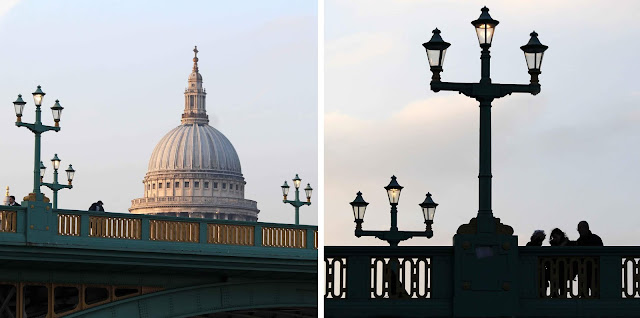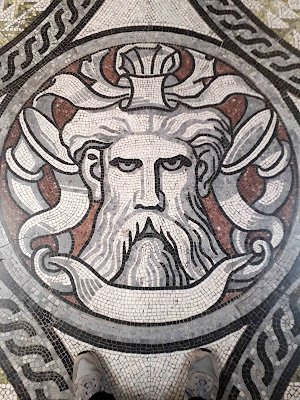This
blog began on a more personal level than it now is; it was a way both to
diarise for myself and to share with friends and family my various life
adventures. Over the years, given the more sinister turn the online world of
social media has taken, with the capturing and misuse of our personal
information, I have become wary of sharing the more specific and intimate
details of my life and so this blog has morphed into something that, instead,
reflects some of the things that interest me. As the heading indicates, sconzani now contains ‘sprinklings of
history, a smidgen of genealogy, a dash of art & a dusting of
architecture, all mixed together with my eccentric fascinations’.
Still,
as the decade comes to a close, I, like many other people, have been reflecting
on the changes the last ten years have brought and I’ve found this blog
invaluable for meandering through my own memories. I’ve chosen a blog from each
of the last ten years as an example of where life has been taking me.
Way
back on 2 November 2010, when I still lived in New Zealand, I began this blog
with a post entitled ‘43 more sleeps’, about my forthcoming return to Cambodia, to
spend – for the second time – my Christmas holidays volunteering as an English
teacher at a local NGO. As we shall see, those volunteering stints changed my
life.
 |
| 2011: leaving behind my fabulous Auckland city view |
By 10 April 2011, when I blogged ‘Dream. Plan. Do!’, huge changes were afoot: I was just
days away from leaving Auckland to move to Cusco, Peru, where I lived and worked
for the next 18 months, as Project manager for a British NGO operating in
South America. As well as blogging about my very rewarding work, I wrote a lot
about work trips to Colombia and Argentina; border runs to Bolivia to renew my
Peru visa; and holiday time exploring much of Peru and Bolivia, and a little of
Chile.
It’s been a joy looking through my 2012
blogs – so much exploring, so many lovely people, such fun times. Here’s just
one example of the amazing festivals that seemed almost continuous in Peru: my
blog from 21 July 2012 ‘Inti Raymi II’,
about the local mid-winter solstice celebrations in Cusco.
I left Peru at the end of 2012 but continued
to work, for several months, for the same British NGO, as Development manager based
in their Siem Reap office, in Cambodia. And then the need to sort out some
financial issues in New Zealand drew me, unexpectedly, back to Auckland. I
summarised that year in my blog ‘The year that was: 2013’, published on 31 December.
2014 began in New Zealand and ended with me
living in Cheshire, in England, lodging with a friend I’d worked with in Peru.
In the months between I’d enjoyed a fabulous holiday in Morocco, a country that
had long been on my wish list; visited friends in England; returned to New
Zealand and, not able to settle down to life back in New Zealand, quit my job
to return to England, with an amazing holiday in Tanzania on the return
journey. On 24 October I published a blog entitled ‘Tanzania: Meeting the Maasai’, giving a taste of the incredible
experience of spending time in a Maasai village.
 |
| 2015: exploring Chicago |
You
might by now be forgiven for thinking I have very itchy feet! During 2015, I
decided I wanted to move (perhaps) permanently to Britain so, by the end of the
year, I had returned to New Zealand, sold my apartment, packed up my belongings,
and moved to Cardiff in Wales. And, never one to waste a journey, I had spent a
week visiting my lovely friend Trudey in Wisconsin, burned shoe rubber
exploring Chicago, and enjoyed a volunteering holiday in Nicaragua. Here’s a
snippet from my time with Trudey and some of her women friends, ‘Wisconsin: Road trip to Washington Island’,
published on 14 August 2015. What a hoot that day was!
 |
| 2016: 'Walking with Mary' in Draethen woods |
And
so to a more settled life in south Wales. It may not be as exotic as some of
the places I’ve lived but, as a newcomer, I have found a great deal to
explore and learn about. Early in 2016, I began a two-day-a-week two-year volunteering
stint at the local environmental records centre, helping to extract and digitise
the biological records of naturalist extraordinaire, Dr Mary Gilham. Our team
of volunteers also created a website documenting Mary’s life and achievements,
and helped organise various public engagement events. Published on 4 April
2016, here’s one of my first Mary-inspired blogs, ‘Wherever I turn, there’s Mary’.
For
me, one of the major attractions of living in Britain is the sense of history
that abounds here. Castles and cathedrals, Roman ruins and Iron age hill forts,
even some of the houses I’ve lived in – there is so much that is old, full of
characters and stories, and I delight in exploring, researching and writing
about the historic things I see. Here’s an example from 30 April 2017: ‘Roman Wales: Caerwent’.
Another
wonderful thing about living here is being able to visit local friends: I
particularly enjoy visits to my friend Jill, who lives in East Sussex and who
shares my interest in the historic and in wildlife. And, of course, I blog
about the amazing, fascinating, beautiful places we visit. In March 2018, one
of the stunning places we explored was ‘Beautiful Bodiam’.
I
continue to find new and interesting objects, buildings, graves, ruins, and
more in south Wales to explore, photograph and write about. Here, for example, is
a piece from April this year about the opening of the pier at my local beach, ‘Penarth : the opening of the pier’.
It’s
impossible to know what the next decade will bring. The political and societal turmoil that
has followed the 2016 Brexit vote seems to me to have diminished Britain and its people, and has led me to question whether I want to remain here. And reading
through the events of the past ten years has certainly made my feet feel a
little itchy again, so ...














































